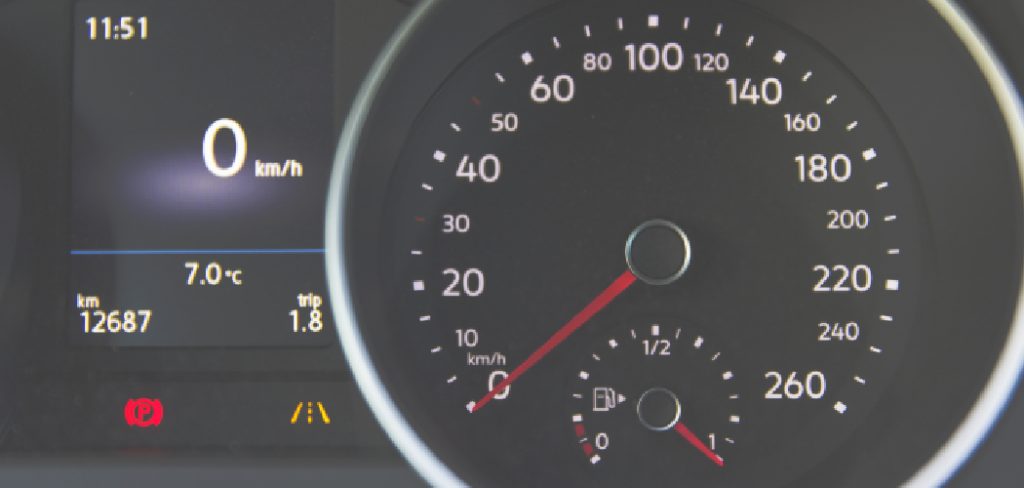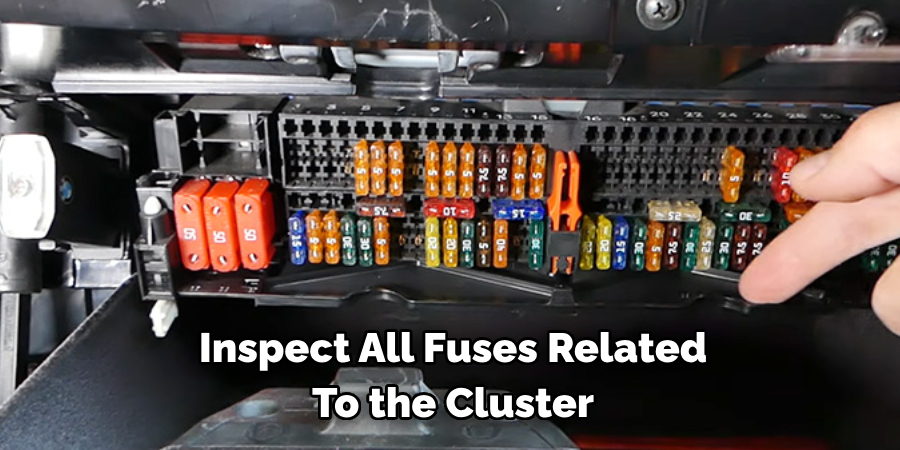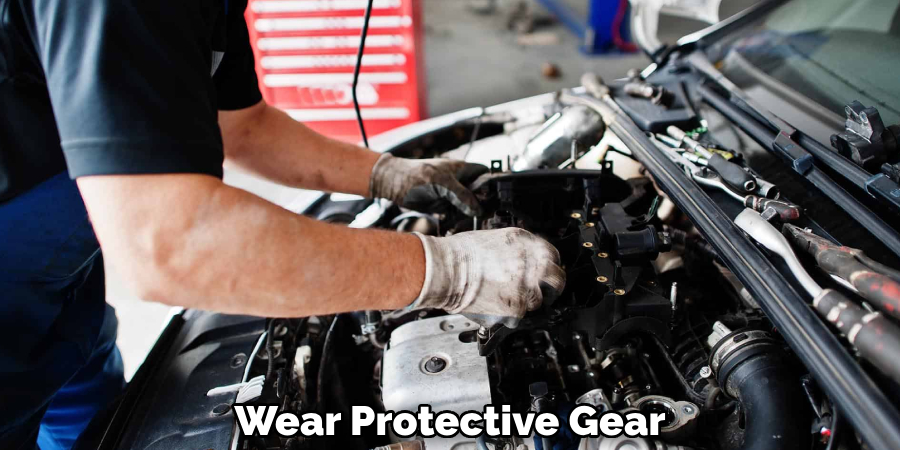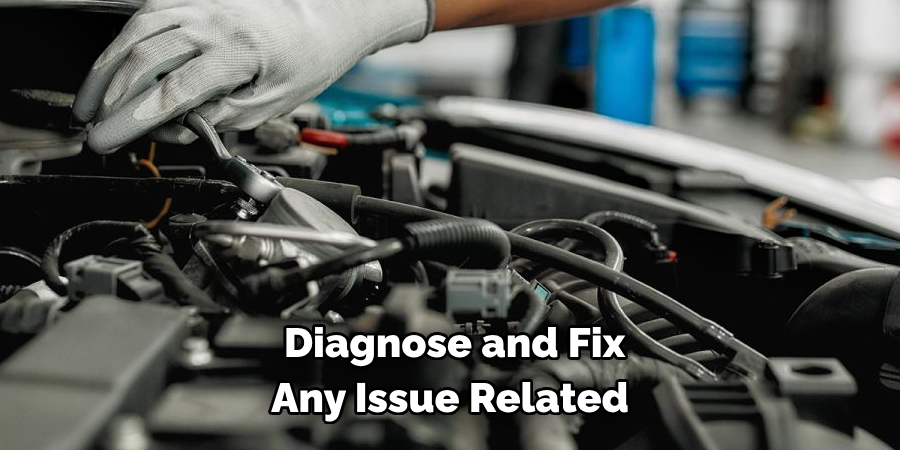There are various reasons why you should know to fix check gages light. This warning indicator is designed to alert you when there’s an issue with your car’s gauges, which can give you valuable information about the performance and safety of your vehicle. If this light comes on, it could indicate a sensor or component malfunctioning or an issue with the car’s electrical system.
The advantages of knowing how to fix the check gages light are many. First, it helps diagnose potential problems with your vehicle’s engine and other components, ensuring they function properly. Knowing how to repair the check gages light can save you time and money by preventing costly repairs due to unchecked problems. In this blog post, You will learn how to fix check gages light.

Step by Step Processes for How to Fix Check Gages Light
Step 1: Inspect the Wiring
The most common cause of a “Check Gages Light” is a wiring problem. Check the wires leading to the cluster for loose, frayed, or broken connections. Tighten any loose connections and repair any frayed or broken ones with electrical tape.
Step 2: Replace Fuses
Inspect all fuses related to the cluster for signs of corrosion or other damage. Replace any fuses that are not working properly. Low oil pressure can cause the “Check Gages Light” to come on. Check your oil pressure with a gauge and ensure it is within normal range. If it is, move on to the next step.

Step 3: Inspect the Alternator
If your car is not charging the battery properly, it can cause the warning light to come on. Inspect the alternator for any loose connections or other damage. Make sure that the temperature gauge on your dashboard is working properly. If not, replace it with a new one and reset the indicator.
Step 4: Inspect the Vacuum Hoses
Ensure all vacuum hoses are connected properly and none have any cracks or damage. This can cause a false “Check Gages Light” warning. The mass airflow sensor might need to be cleaned if it is not functioning correctly. Follow the instructions in your car’s manual to do so.
Step 5: Reset the Computer
If all else fails, you may need to reset the computer system. This will reset any hidden codes and could solve your problem. Check your owner’s manual for instructions on how to do this. If none of these steps have worked, the cluster may be broken. Replace it with a new one and reset the indicator.
Step 6: Visit a Mechanic
If you have tried all these steps and still can’t get your “Check Gages Light” to disappear, visit a mechanic for further diagnosis. They will be able to find the exact cause of the problem and help you fix it.
Following these steps, you should be able to diagnose and fix the “Check Gages Light” without taking your car in for a costly repair.

Tips for How to Fix Check Gages Light
- Always wear protective gear such as gloves and safety glasses when working on a vehicle’s electrical system, especially when dealing with the Check Gages light. This will help protect against any potential hazards involved in the repair process.
- Always consult your car owner’s manual to ensure you understand what your specific make and model requires for its Check Gages light repair.
- If your car has had a recent service, ensure all connections and wires are connected correctly before attempting any repairs. This will help prevent any further damage.
- When replacing the fuse that controls the Check Gages light, use the correct amperage rating (usually found on the fuse box cover) to ensure it is compatible with your vehicle.
- Be sure to connect any wiring harnesses correctly and securely, as loose connections or poor contact points can be a source of Check Gages light errors.
- If you need help properly fixing the issue, take your car to a qualified service technician to resolve the Check Gages light issue.
Following these tips will help ensure your safety and the accuracy of any repair work you undertake to fix your car’s Check Gages Light.
What is the Cause of the Check Gages Light?
The Check Gages light is an indicator on your car’s dashboard that alerts you to a problem with the pressure in one or more of your car’s fluids. It could be related to low oil pressure, a faulty coolant temperature sensor, or a malfunctioning fuel gauge. Depending on your vehicle, the Check Gages light may illuminate because of another issue, like an electrical problem or a failed pressure sensor.
Once you’ve identified the cause of the Check Gages light, it’s time to take action. If low oil pressure is to blame, add additional oil until it reaches the proper level, and make sure you don’t overfill. You might also need to replace your car’s oil pump if it isn’t working correctly. If the coolant temperature sensor is malfunctioning, replace it with a new one and check all its connections. You should also check the cooling system for any blockages or leaks causing an overheating problem.
Are There Any Potential Safety Concerns Related to Fixing the Check Gages Light?
Yes. It is important to consider safety when attempting to diagnose and repair any issue related to the Check Gages Light. If you are unfamiliar with your vehicle’s electrical system, it is best to have a qualified mechanic check it out for you. Working on your vehicle can be dangerous if not done correctly. Additionally, you may unknowingly cause additional damage if you are not careful. It is always best to consult an expert before attempting any repairs or maintenance on your vehicle. Doing so can help ensure that all necessary precautions are taken to keep you safe while fixing the Check Gages Light.
When attempting to diagnose and fix any issue related to the Check Gages Light, it is important to follow all safety protocols. This includes: ensuring the car is in the park and that the emergency brake is set when performing any maintenance; wearing protective gear, such as gloves and eyewear; using safe methods of lifting or jacking up the vehicle; and avoiding any contact with the hot surfaces of the engine. Additionally, it is important to read all instructions carefully and use caution when handling any tools or supplies needed for the repair.

What Type of Vehicle Maintenance Should You Do to Help Prevent the Check Gages Light From Coming Back on?
To help prevent the Check Gages light from coming back on, be sure to follow your vehicle’s maintenance schedule. This includes regularly changing the oil and checking other fluids, such as coolant and transmission fluid. It is also important to have your spark plugs replaced periodically, and your engine air filter changed when needed. Additionally, you should check your vehicle’s hoses and belts to ensure they are not worn or damaged.
Finally, it is essential to have your vehicle inspected by a qualified technician at least once every year or two to catch and prevent any major issues. By following these steps, you can greatly reduce the chances of your Check Gages light coming back on in the future. If you need further help, it is always best to consult a professional mechanic who can diagnose the issue and get your car back on the road.
Are Any Additional Resources Available if You Need More Information About How to Fix the Check Gages Light?
Yes, several helpful resources are available if you need more information about fixing the check gages light. You can consult your vehicle’s owner’s manual for instructions or troubleshooting tips. Additionally, a reputable automotive website such as AutoZone or Advance Auto Parts will be able to provide detailed step-by-step instructions on how to fix the issue for most makes and models. You can also find helpful advice from online forums where mechanics, DIYers, and other car enthusiasts share their experiences and tips.

Finally, it’s always a good idea to visit your local mechanic for an expert opinion on how to fix the check gages light. They will be able to diagnose the issue quickly and accurately and provide you with the best repair options. Remember, the sooner you fix the problem, the less likely a more serious issue will occur. Taking care of any check gauge light issues quickly will help you avoid costly repairs.
Conclusion
One of the main disadvantages of fixing a check gages light is that it can be difficult to identify and address the underlying cause. Check gages lights are typically triggered when there is an issue with the car’s engine or powertrain, and determining precisely what the problem is can require time and specialized knowledge.
In conclusion, fixing the check gages light on your car is not something to take lightly. You must identify the source of the issue and complete repairs as quickly as possible to ensure that your car runs efficiently and safely. Fortunately, you can take a few simple steps to troubleshoot the issue and get back on the road. This article has been beneficial for learning how to fix check gages light. Make Sure the preventive measures are followed chronologically.
